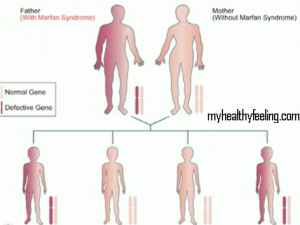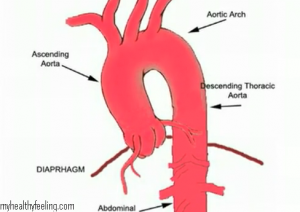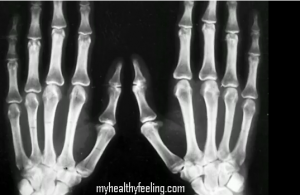Marfan Syndrome is a disorder that affects the connective tissue, the fibrous tissue that gives strength to the structures in the body. If you see pictures of Marfan syndrome, you will see that the people are affected are unusually tall, with thin long fingers and long legs. The syndrome affects the cardiovascular system, skin, the eyes and the skeletal system.
Marfan Syndrome causes
Marfan Syndrome is caused by a genetic defect. The gene that is impaired is FBN1 which has a connective protein called Fibrillin-1, it plays a crucial role in building the elastic tissue in the body. The genetic defect leads to overgrowth of bones, making them stretch long. This lead to tall height, limbs and arms. Also affected from Marfan Syndrome are the lung tissue, the eyes leading to cataract and other eye problems, the spinal cord tissue, the aorta, the main artery that circulates blood from the heart to various parts of the body. In fact, the syndrome can cause the aorta to stretch and weaken leading to aortic dilation or aortic aneurysm.
Though mainly Marfan syndrome is genetic disorder, in 30 percent of the cases, it has been seen that the person with the syndrome did not have a family history of the disease. Medically, these cases are termed ‘sporadic’ believed to have taken effect from an unstructured new gene defect.
Marfan Syndrome Symptoms
Here are the symptoms of people with Marfan syndrome
1. As mentioned above, people with marfan syndrome are quite tall with elongated thin arms and legs and fingers that are spider-like, this condition is known as arachnodactyly.
2. Learning disability
3. Near sightedness
4. Small lower jaw or microgathia
5. Scoliosis, spine curving to one side
6. Chest either sunk in or sticking out (pectus excavtum-funnel chest) or pectus carinatum (pigeon breast)
7. Ill fitting teeth, arched tongue
8. Over-flexible joints
9. Eyes moving more freely than normal, called eye dislocation
10. Narrow face
11. Hypotonia
Diagnosis of Marfan Syndrome
The doctor diagnoses Marfan Syndrome by conducting a physical exam. He will look for hypermobile joints, aneurysm, heart valve problems and collapsed lung
An eye test is also done to find out retinal detachment, defective cornea or lens, vision problems.
The medical tests that are done to detect Marfan syndrome are
1. Fibrillin-1 mutation testing
2. Echocardiogram, advisable to done every year to find out the basal position of the aorta
Marfan Syndrome Treatment
There is no cure for Marfan Syndrome but treatment is done by addressing each symptom and treating it. Clinical tests are underway and there is hope of a better, comprehensive treatment for Marfan Syndrome.
1. Medication to slow down the heart-rate. A cardiologist can address the problem of aorta and heart valves. He or she may give medication to reduce the quick heart rate that can put stress on the aorta. Beta blockers are given to slow the heart rate and reduce aortic dilation.Blood pressure can be reduced without further reducing heart rate than needed by ACE inhibitors and angiotensin II receptor antagonists
2. Vision problems should be corrected as and when there are signs
3. It is better to address the problem of scoliosis during teenage.
4. In order to prevent endocardiditis, Marfan syndrome affected individuals should take antibiotics before dental procedures.
5. Pregnant women who have Marfan Syndome should be monitored minutely because there can be an increased pressure of the aorta and heart.
Marfan Syndome Life Expectancy
Most people who have Marfan Syndome die due to heart related complications. With good care and health, most people can still live beyond 60 years of age and even more. The complications associated with the disease include aortic rupture, dissecting aortic aneurysm, aortic regurgitation, heart failure, mitral valve prolapsed, vision related issues, bacterial endocarditiis and scoliosis etc.
Prevent Marfan Syndrome
Marfan Syndrome cannot be prevented in case of spontaneous new gene mutations leading to Marfan at least in 33 percent of cases. If you have Marfan Sydrome, make sure that you check with a doctor at least once in a year. Also avoid participating in activities which raise the heart-rate like athletics or adventurous sports.
Marfan Syndrome Pictures
Check out the pictures of Marfan Syndrome and notice the physical traits that are in line with the symptoms of the disorder.





Happy Mother’s Day Richella! What a beautiful post. I didn’t relaize your husband and 2 sons have Marfan Syndrome. We have a dear friend who has it and he went open-heart surgery just a couple of years ago. Their 3 children are young and they don’t yet know whether any of them have the condition. I hope your Mother’s Day has been one of rest, blessing, and knowing how much you are loved and appreciated by your sweet family!